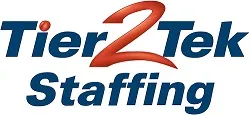Leadership Interview Questions with Answers

Preparing for leadership interviews can be challenging, but the right questions can help you find the best candidate for your team. In this guide, we’ve gathered top Leadership Interview Questions to help you evaluate key qualities like decision-making, communication, and problem-solving. Whether you’re hiring for a senior executive or a department manager, these Leadership Interview Questions will give you the insights you need to make informed decisions. With these Leadership Interview Questions in hand, you’ll be better prepared to identify the right fit for your leadership roles.
1. Can you describe your leadership style?
Answer: My leadership style is primarily transformational. I focus on inspiring and motivating my team, encouraging innovation and creativity. I believe in leading by example and strive to be a role model for my team.
2. How do you handle conflict within your team?
Answer: When handling conflicts, I prioritize open communication and empathy. I encourage team members to express their concerns and work collaboratively to find a mutually beneficial solution.
3. Describe a time when you had to lead a challenging project.
Answer: In my previous role, I led a project under tight deadlines and budget constraints. I maintained open communication, delegated tasks effectively, and motivated the team to work efficiently, which led to successful project completion.
4. How do you motivate team members?
Answer: I motivate team members by recognizing their efforts, providing constructive feedback, and understanding their individual motivators. I also ensure that they have growth opportunities and feel valued in their roles.
5. Can you give an example of how you’ve built a successful team?
Answer: I built a successful team by carefully selecting individuals with diverse skills and backgrounds. I fostered a culture of respect and collaboration, which led to increased productivity and innovation.
6. How do you prioritize your tasks and projects?
Answer: I prioritize tasks based on urgency and importance. I also consider the long-term impact and align them with the overall goals of the organization.
7. Describe a time when you failed as a leader. How did you handle it?
Answer: Once, I misjudged a project’s complexity, leading to delays. I took responsibility, reevaluated the plan, and communicated transparently with stakeholders. This experience taught me the importance of thorough analysis and contingency planning.
8. How do you handle feedback, both positive and negative?
Answer: I welcome all feedback as it’s crucial for personal and professional growth. I reflect on negative feedback to identify areas for improvement and use positive feedback to reinforce effective behaviors.
9. How do you ensure your team meets its goals?
Answer: I ensure clear goal setting, regular progress checks, and provide the necessary resources and support. I also encourage team accountability and celebrate milestones to keep the team motivated.
10. What strategies do you use for decision-making?
Answer: My decision-making strategy involves gathering relevant information, consulting with key team members, weighing the pros and cons, and considering the impact on stakeholders.
11. Describe a time when you had to make a tough decision. What was the outcome?
Answer: I had to decide between two equally qualified candidates for a critical role. I chose the one whose values aligned more closely with the company’s. The outcome was positive as the individual excelled in the role and contributed significantly to the team.
12. How do you develop leadership skills in others?
Answer: I develop leadership skills in others by providing opportunities for them to take on leadership roles in projects, offering mentorship, and encouraging them to pursue relevant training and professional development.
13. Can you describe a time when you had to adapt your leadership approach?
Answer: During a merger, I had to adapt my leadership style to accommodate new team members with different working styles. I focused more on individual coaching and team-building activities to foster a cohesive team environment.
14. How do you balance being approachable and maintaining authority?
Answer: I balance being approachable and maintaining authority by being open and empathetic in my interactions while setting clear expectations and holding the team accountable for their performance.
15. How do you handle underperforming team members?
Answer: For underperforming team members, I first seek to understand the root cause of the issue. Then, I provide targeted coaching, additional training, or resources as needed to help them improve.
16. Describe a time when you successfully delegated a task.
Answer: I once delegated a critical research task to a junior team member, providing clear instructions and support. The member excelled, which boosted their confidence and contributed significantly to the project’s success.
17. How do you stay informed and current in your field?
Answer: I stay informed by regularly reading industry publications, attending seminars and conferences, and networking with professionals in my field. I also invest time in continuous learning and professional development.
18. How do you ensure effective communication within your team?
Answer: I ensure effective communication by holding regular team meetings, encouraging open dialogue, and using various communication tools. I also emphasize the importance of clear, concise, and respectful communication.
19. Can you give an example of how you’ve handled a high-pressure situation?
Answer: In a high-pressure situation with a tight deadline, I remained calm, prioritized tasks, and mobilized the team to focus on critical areas. This approach allowed us to meet the deadline without compromising quality.
20. How do you assess and manage risks in your projects?
Answer: I assess risks by identifying potential issues, evaluating their impact and likelihood, and then developing mitigation strategies. Regular risk reviews are also part of my project management approach.
21. Describe a time when you had to inspire or motivate a demotivated team.
Answer: I encountered a demotivated team after a project setback. I held a meeting to address concerns, realigned the team with the project’s vision, and highlighted individual contributions, which reignited their motivation.
22. How do you handle changes in company policies or direction?
Answer: I handle changes in policies or direction by staying flexible, communicating the changes effectively to my team, and providing support to adapt to the new direction.
23. What is your approach to mentoring and coaching others?
Answer: My approach to mentoring is personalized; I focus on the individual’s goals and strengths. For coaching, I use a collaborative approach, providing guidance while encouraging self-reflection and personal development.
24. How do you measure the success of your leadership?
Answer: I measure the success of my leadership by the growth and achievements of my team, the attainment of project goals, and the feedback I receive from peers, supervisors, and team members.
25. Can you describe a situation where you had to lead a cross-functional team?
Answer: Leading a cross-functional team for a company-wide initiative, I facilitated communication among diverse departments, ensured alignment with the project objectives, and leveraged the unique skills of each team member.
26. How do you approach setting goals for your team?
Answer: I approach goal setting collaboratively, ensuring that the goals are challenging yet achievable, aligned with organizational objectives, and clearly communicated to all team members.
27. Describe a time when you had to rely on your leadership instincts.
Answer: Once, during a critical system outage, I had to quickly make decisions without complete information. My instincts led me to mobilize the right resources and manage communications effectively, leading to a timely resolution.
28. How do you encourage creativity and innovation in your team?
Answer: I encourage creativity by creating an open environment where new ideas are welcomed and explored. I also provide resources for innovative projects and recognize creative contributions.
29. How do you ensure your own professional development as a leader?
Answer: I ensure my professional development by seeking feedback, engaging in continuous learning, attending leadership workshops, and staying updated with industry trends and best practices.
30. Can you provide an example of how you’ve driven change in an organization?
Answer: I initiated a digital transformation in my previous organization by advocating for new technologies, aligning stakeholders, and leading a team to implement the changes, which resulted in improved efficiency and customer satisfaction.
Contact Us for Expert Leadership Staffing Solutions
Looking to hire exceptional leaders for your organization? Tier2Tek Staffing is here to help. Our team can guide you through the interview process, including crafting the best leadership interview questions to ensure you find the right fit for your company. Contact us today to learn how we can assist in identifying and securing top leadership talent that aligns with your goals.
